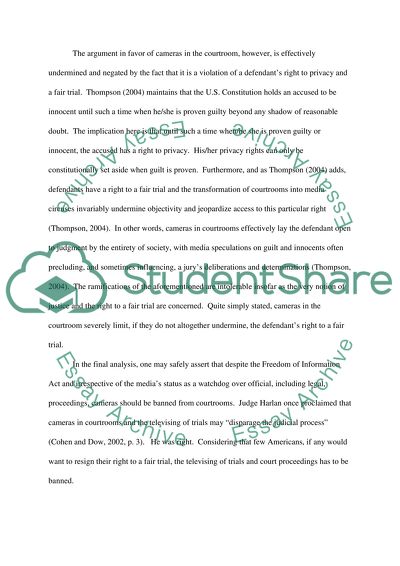The Legality and Constitutionality of Cameras in Courtrooms Essay. https://studentshare.org/law/1502706-first-amendment-and-the-freedom-of-information-act
The Legality and Constitutionality of Cameras in Courtrooms Essay. https://studentshare.org/law/1502706-first-amendment-and-the-freedom-of-information-act.


